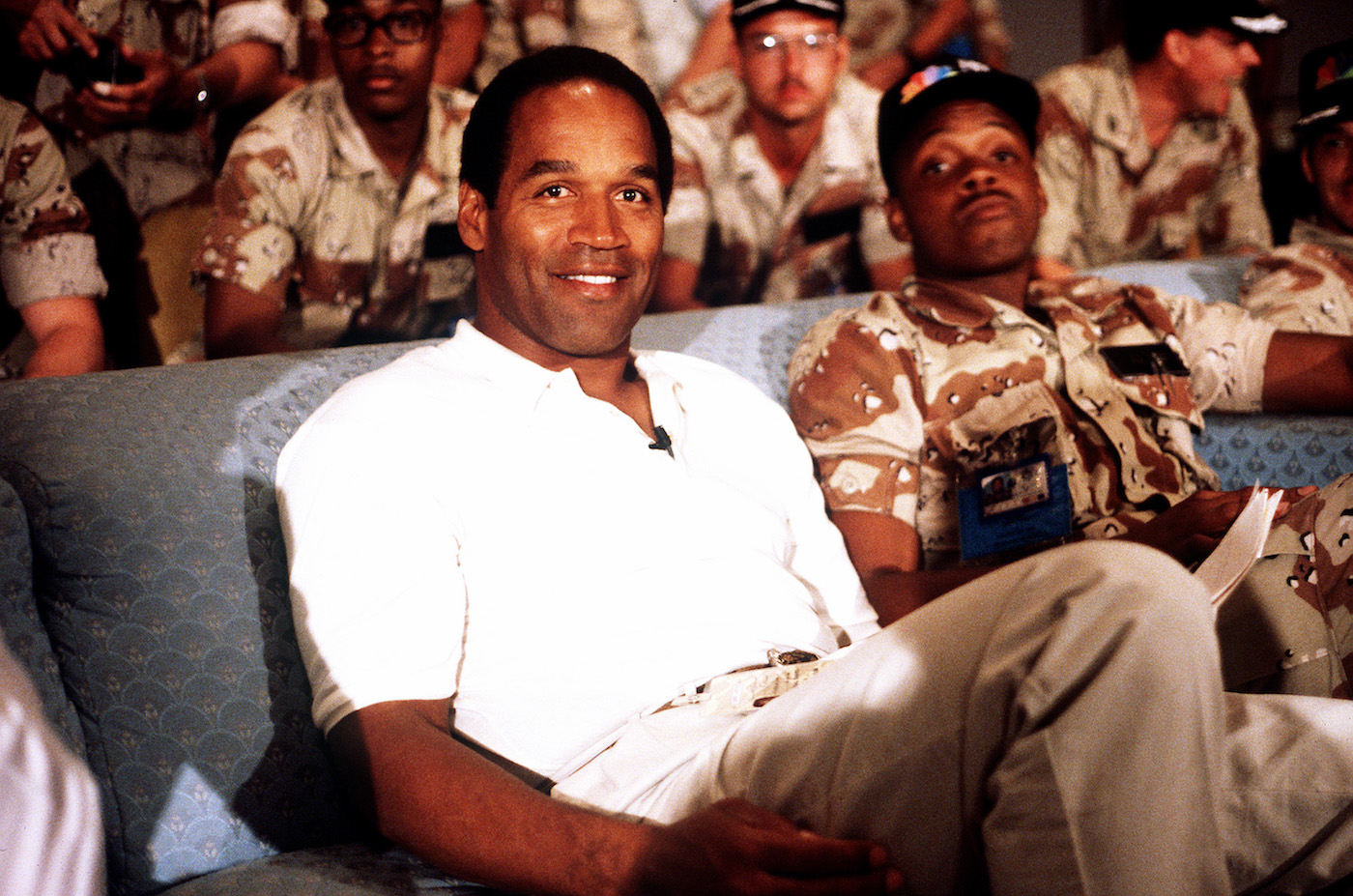The 1995 murder trial of former collegiate and NFL running back O.J. Simpson captivated Americans like few other cases in history. Sports fans and others alike followed the case closely in newspapers, magazines and on TV. And as much as you think you know about it, there’s always something new to learn.
2016 has now seen two separate interpretations of the trial of Simpson for the bloody murders of his ex-wife Nicole Brown Simpson and her friend Ronald Goldman. Both series are arresting TV. FX’s star-studded, 10-episode docudrama The People v. O.J. Simpson: American Crime Story debuted in February to critical acclaim and concluded in April. ESPN’s installment in its popular 30 for 30 documentary series about the O.J. Simpson trial, O.J.: Made in America, premiered Monday, June 13, after a heavy marketing campaign. It is also the same day Brown Simpson and Goldman were found dead at Brown Simpson‘s home in Los Angeles 22 years prior.
The five-part mini-series is just under eight hours in total, equating to about 1 1/2 hours per episode. It covered much more of Simpson’s life compared to its FX counterpart, which focused only on the ’95 trial proceedings and what life was like outside it.
O.J.: Made in America begins with Simpson’s early life as a standout for a small community college in San Francisco, and takes us all the way through present day, as he serves a 33-year prison sentence for kidnapping and armed robbery until at least 2017 — when he is up for parole. The documentary details every possible aspect of not only Simpson’s life, but what was culturally happening in America leading up to, during and after the murder trial.
This documentary marks the first time the 30 for 30 series has gone with more than one part, and for good reason. Director Ezra Edelman conducted 72 interviews, according to The Huffington Post and other news outlets, from all points of Simpson’s life and beyond.
The series also serves as a racial and social commentary, as it spent a considerable amount of time covering the events of the 1992 Rodney King trial — where one sergeant and three officers from the Los Angeles Police Department were acquitted of the crime of assault with a deadly weapon after being caught beating King on video after a high-speed pursuit. The ensuing LA riots were also covered, as well as other racially-driven conflicts of the time. Instead of simply narrating the life of Simpson and his trial, the documentary focused on why the trial was important for African-Americans in the U.S. and how their civil rights were affected. This context set the stage for describing the magnitude of the actual case and what was at stake — something not even the prosecution team realized at the time.
Simpson’s fall from grace can be described using many adjectives: shocking, catastrophic, fascinating, and the list goes on. How one man went from a nationally-beloved sports hero and celebrity to a social pariah in a matter of a few years was a cultural milestone that demanded to be re-examined. O.J.: Made in America answers any lingering questions and puts absolutely everything in perspective in a way that deserves our attention.
Cable subscribers can stream O.J.: Made in America now on WatchESPN.
[fbcomments url="" width="100%" count="on"]















